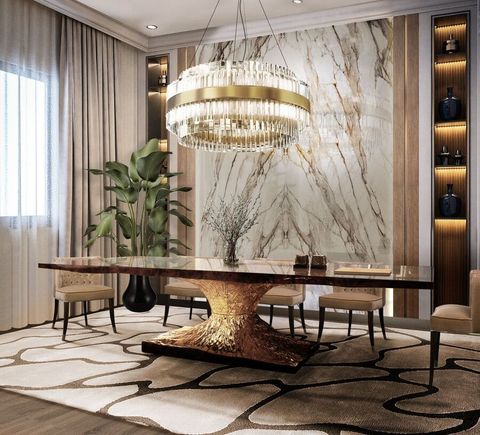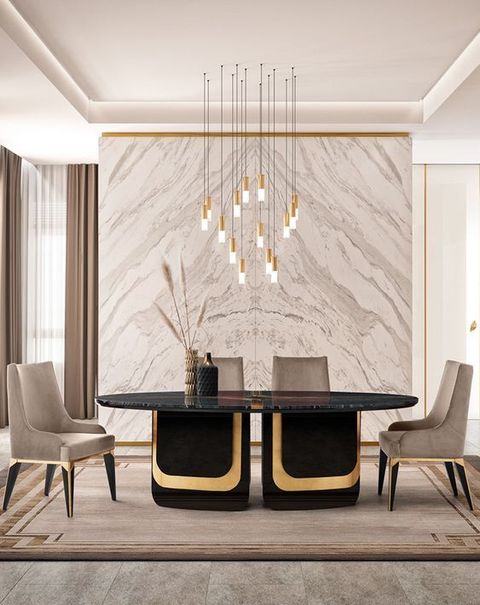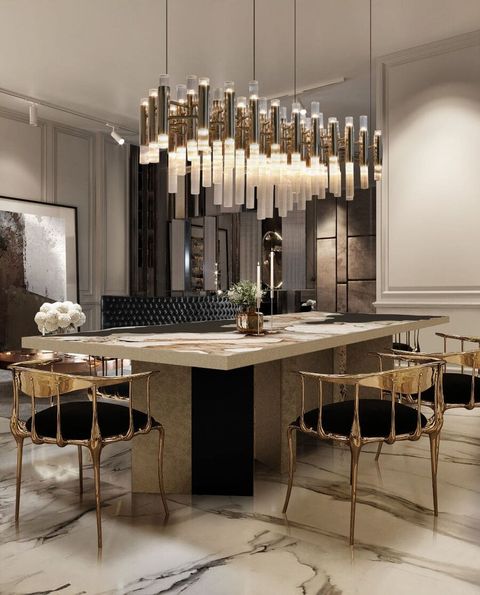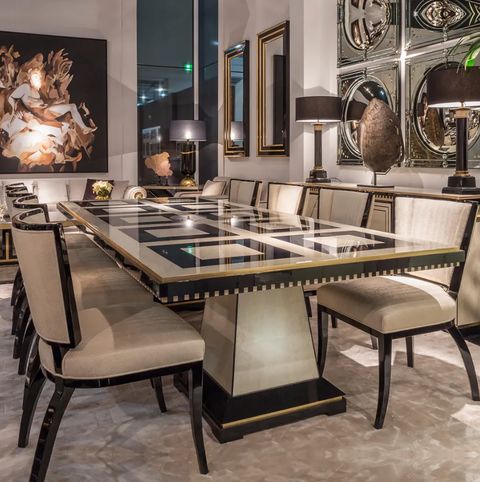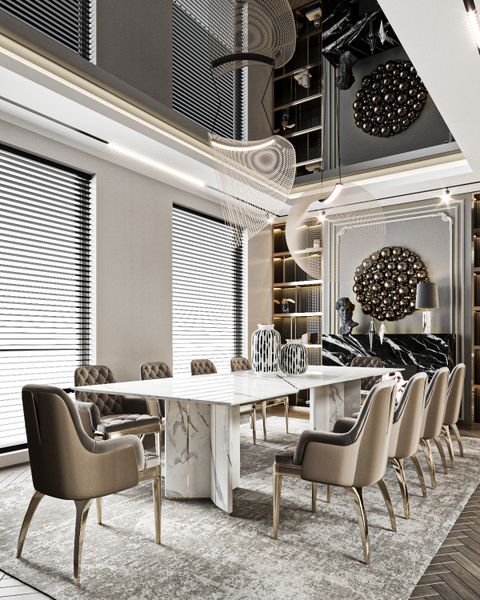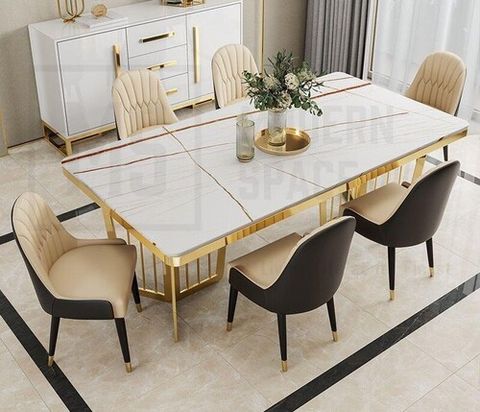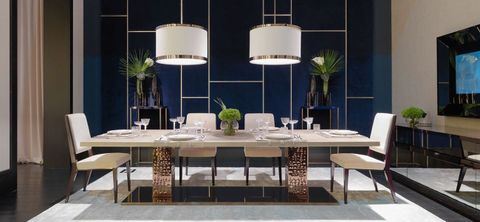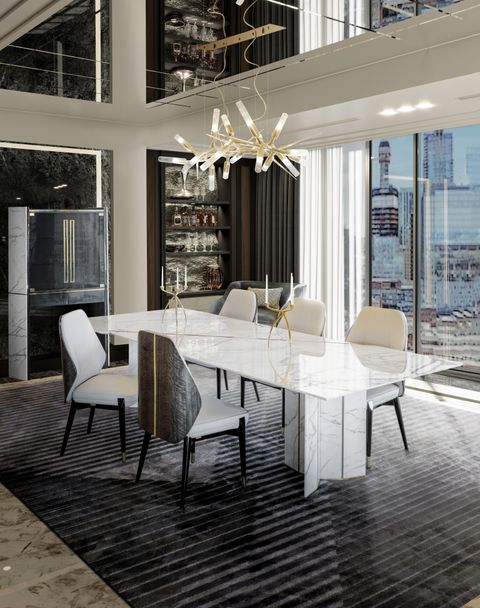When it comes to creating an inviting and sophisticated dining experience, the table sits at the heart of everything. It’s more than just a place to eat—it’s a statement piece that defines the character of your home. Whether you’re planning a complete renovation or simply updating your existing space, choosing the right dining table requires careful consideration of style, function, and how it fits within your overall design vision.
Think about the last time you sat down for dinner at a truly memorable place. What made it special? Was it the food? The company? Or perhaps the table itself? In high-end interior design, every element matters, and the dining table is no exception. It’s the centerpiece that brings families together, hosts important gatherings, and creates lasting memories. But selecting the right table isn’t just about aesthetics—it’s about understanding how form meets function, how materials speak to your lifestyle, and how proportions can transform a room. This guide will walk you through the essential factors to consider when choosing a modern dining table that will serve your space beautifully for years to come.
Understanding Modern Design Principles
Modern dining tables aren’t just about looking contemporary—they’re about embodying clean lines, thoughtful functionality, and timeless appeal. The best modern designs strip away unnecessary ornamentation while maintaining visual interest through material quality and precise craftsmanship. Consider how your table will interact with the surrounding space. Does it need to be the dominant feature, or should it blend harmoniously with other elements? A well-chosen table should feel intentional rather than forced, serving as a bridge between the practical needs of daily life and the aspirational goals of your design aesthetic. Look for pieces that balance simplicity with sophistication, where each line serves a purpose and every material choice reflects attention to detail.
Material Selection and Quality Matters
The foundation of any great dining table lies in its materials. Wood offers warmth and natural beauty, with options ranging from rustic oak to sleek walnut. Metal brings industrial strength and contemporary flair, whether through brushed steel or polished brass finishes. Glass adds transparency and lightness, creating an airy feeling that works particularly well in smaller spaces. Stone and concrete offer durability and a sense of permanence that appeals to those seeking lasting investment pieces. Each material has its own personality and maintenance requirements. For example, wood may require occasional oiling, while glass needs regular cleaning to maintain its clarity. Consider how much time you want to spend caring for your table versus how much you value the visual impact. Quality isn’t just about price—it’s about how well the materials age and how they complement your lifestyle.
Size and Proportions That Work
A dining table that’s too big can overwhelm a room, while one that’s too small can make guests feel cramped. The key is finding the right scale that complements both your space and your needs. Measure your dining area carefully before making any decisions. Consider the number of people who will regularly dine there, plus extra space for movement around the table. A good rule of thumb is to allow at least 24 inches of width per person, plus additional space for chairs to pull out comfortably. Think about traffic flow too—will people need to walk around the table easily? Will you entertain frequently? These factors influence not just the dimensions but also the shape of your table. Rectangular tables work well for larger spaces and formal dinners, while round tables encourage conversation and are better suited for intimate settings.
Shape and Style Considerations
Different shapes create different atmospheres and experiences. Round tables foster intimacy and conversation, making them ideal for family meals and smaller gatherings. They eliminate the ‘head of the table’ concept and create a more egalitarian dining environment. Square tables offer a balanced approach, combining the comfort of round tables with the structure of rectangular ones. They work well in square-shaped rooms and provide good seating capacity. Rectangle tables are classic choices for larger households or those who entertain regularly. They offer the most seating options and are versatile enough to accommodate various dining styles. When considering style, think about how the shape will fit with your existing furniture. A sleek, minimalist table might clash with ornate dining chairs, while a traditional table can feel out of place in a modern setting. The key is harmony between all elements.
Functionality Beyond the Tabletop
Today’s modern dining tables often incorporate smart features that go beyond basic functionality. Some tables have built-in storage, allowing you to keep dining essentials within reach while maintaining a clean surface. Others feature expandable designs that can grow with your needs, transforming from intimate family meals to large gatherings. Integrated charging stations, LED lighting, and even built-in wine coolers are becoming more common in high-end models. These additions shouldn’t compromise the table’s aesthetic appeal, though. The best functional elements are seamlessly integrated and enhance rather than distract from the overall design. Consider what daily activities you’ll perform around the table and how the table can support those activities without sacrificing its primary purpose as a dining surface.
Integration with Overall Interior Design
Your dining table should feel like it belongs naturally in your space, not like an afterthought. This means considering how it relates to flooring, wall colors, lighting fixtures, and other furniture pieces. If you have a neutral color scheme, a bold table can become a striking focal point. In contrast, if your space already has many vibrant elements, a more understated table might be preferable. The table’s legs, for instance, can either disappear into the floor or make a strong architectural statement depending on your design goals. Lighting above the table should complement rather than compete with the table’s presence. Think about how natural light affects the table throughout the day and how artificial lighting can enhance its appearance. The ultimate test is whether the table makes the entire dining area feel cohesive and intentional.
Choosing a modern dining table for high-end interior design is both an art and a science. It combines aesthetic judgment with practical considerations, requiring you to balance personal taste with functional needs. The right table becomes more than just furniture—it transforms your dining experience and enhances your home’s overall character. Remember that this decision impacts your daily routine and long-term enjoyment of your space. Take time to explore different options, consider how the table will evolve with your lifestyle, and trust your instincts about what feels right. Whether you prefer the warmth of wood, the elegance of glass, or the strength of metal, the key is finding a table that not only looks beautiful but also serves you well. Your dining room deserves nothing less than a table that reflects the care and thoughtfulness you put into your home.

